A wise man once said that when a relationship gets old, you don’t throw it away. Instead, you fix it and learn to navigate that relationship in a new way.
The same can be said about the relationships we have with our technology. If you have an old laptop lying around, don’t throw it away just yet; it can be revitalized and put to good use. All you need to do is find a lightweight Linux distribution that’s compatible with your device’s hardware and you’ll be all set. All these lightweight distros are a far better choice than Windows or macOS for old hardware. They’re even better than the most popular options like Ubuntu.
With that in mind, here are a few lightweight Linux distros that can bring your old laptop back to life.
| Distro | RAM | Disk | CPU | 32-bit |
|---|---|---|---|---|
| Puppy Linux | 300 MB | 512 MB | 1 GHz | Yes |
| DSL | 8 MB | 64 MB | i486 | Yes |
| Lubuntu | 512 MB | 8 GB | 1 GHz | Yes |
| Tiny Core Linux | 46 MB | 0 | i486DX | Yes |
| Q4OS | 128 MB | 3 GB | 300 MHz | Yes |
| antiX | 256 MB | 3 GB | i386 | Yes |
| NetRunner | 400 MB | 15 GB | 1.6 GHz | Yes |
| Bodhi Linux | 512 MB | 5 GB | 500 MHz | Yes |
| Linux Lite | 512 MB | 8 GB | 700 MHz | Yes |
| Peppermint | 512 MB | 4 GB | Intel x86 | Yes |
Shopping for a new Linux laptop? Check out the best Linux laptops.
Puppy Linux
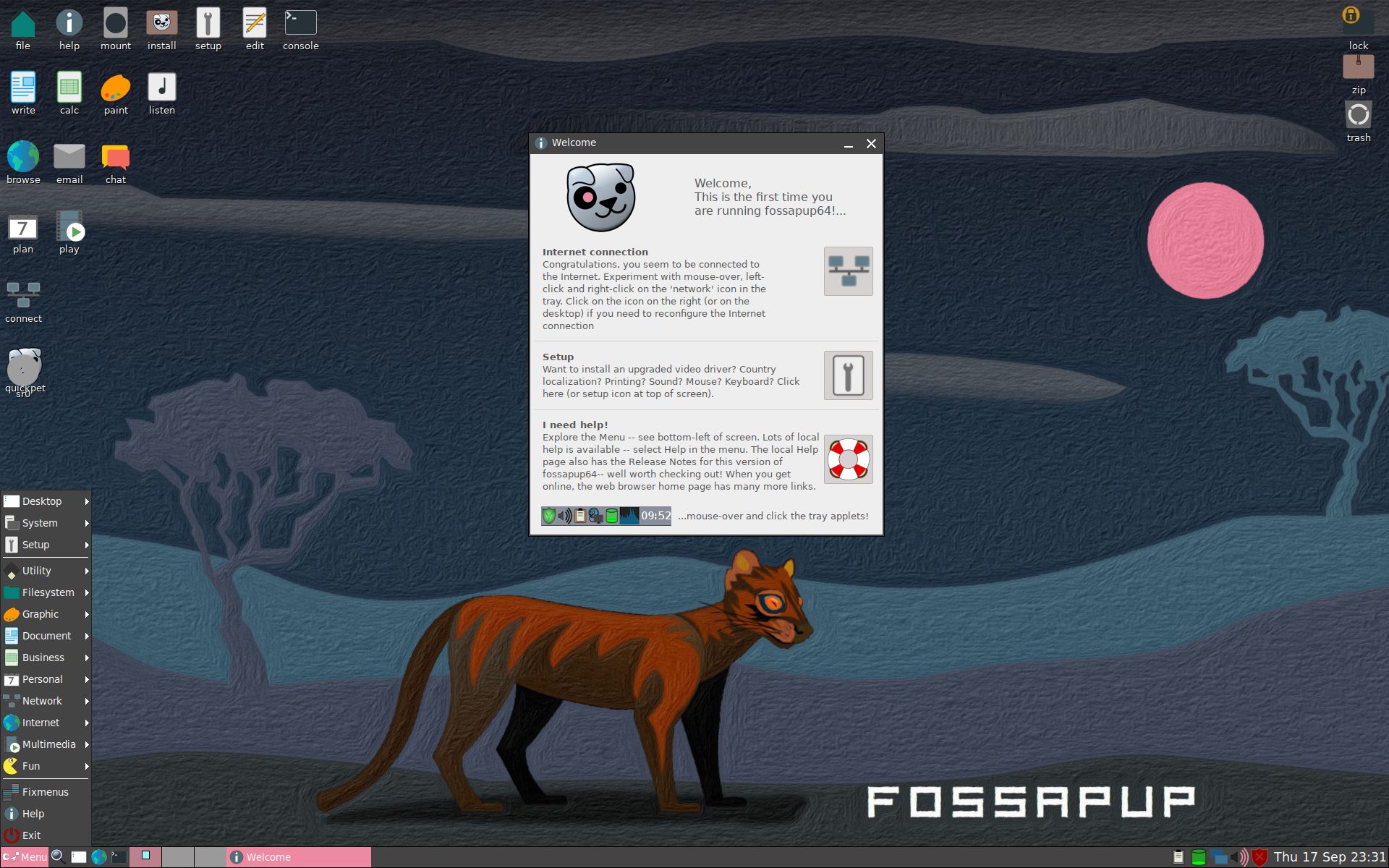

Puppy Linux was originally created by Barry Kauler in 2003 and has since been known to be an extremely lightweight option available for the home user.
Unlike some other Linux distributions, Puppy Linux isn’t based solely on one distribution. Rather, it’s a family of “puppies” or Linux ‘flavors’ that you can choose from.
Some of those download options are based on:
- Slackware
- Debian
- Ubuntu
Puppy Linux System Requirements:
| RAM | Disk Space | CPU |
| 300 MB and upwards.
(512 MB RAM recommended). |
512 MB of disk space.
(Not a requirement if you’re live-booting off of a USB). Personal recommendation is at least 25 GB if you want to use various different applications on it. |
A minimum requirement of any processor with 1GHz speed. |
Puppy Linux Review
Puppy Linux is a fast, stable, and customizable no-frills operating system that, by default, has removed the clutter and unnecessary resource-bloat like animations or fancy software that require beefier hardware than what you would probably use Puppy Linux for, in the first place. To me, it’s (sort of) akin to Windows XP in its simplicity and effectiveness.
| Pros | Cons |
|
|
Damn Small Linux (a.k.a. DSL)
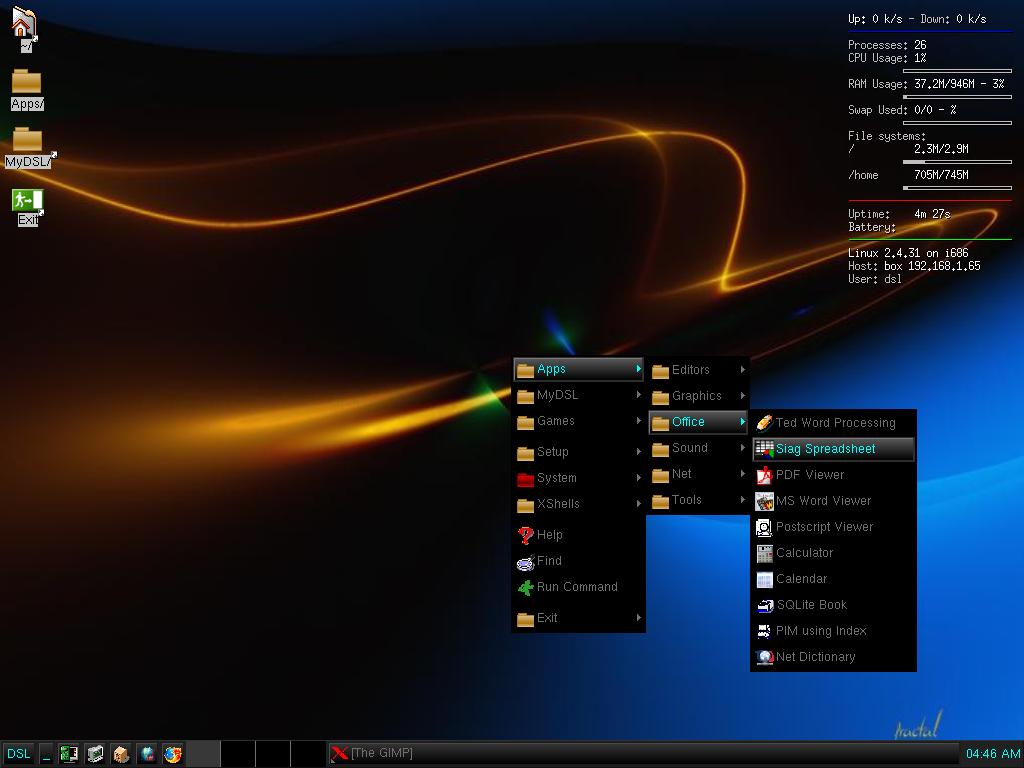

Damn Small Linux is one of the world’s smallest operating systems; it’s so small, in fact, that it can run entirely on your RAM, so you don’t even need a hard disk drive.
Damn Small Linux System Requirements
| RAM | Disk Space | CPU |
| 8 MB of RAM | 64 MB.
Personal recommendation is at least 25 GB if you want to use various different applications on it. |
x86 PCs
486 processor. |
Damn Small Linux Review
DSL is basically the epitome of a certain philosophy I have about technology. Devices, software, and all that goodness are supposed to work for me and adapt to my workflow, not the other way around. I can’t say too much about DSL because it’s quite simple. Point, click, accomplish. It is beneficial because it is able to run on old hardware, but it also does a pretty good job (from my relatively minimal experience) at adapting to newer hardware as well. I used it for about three weeks back in college when I was a web development student, and it ran fine on my modified Chromebook that housed only 2 gigs of RAM.
| Pros | Cons |
|
|
Lubuntu
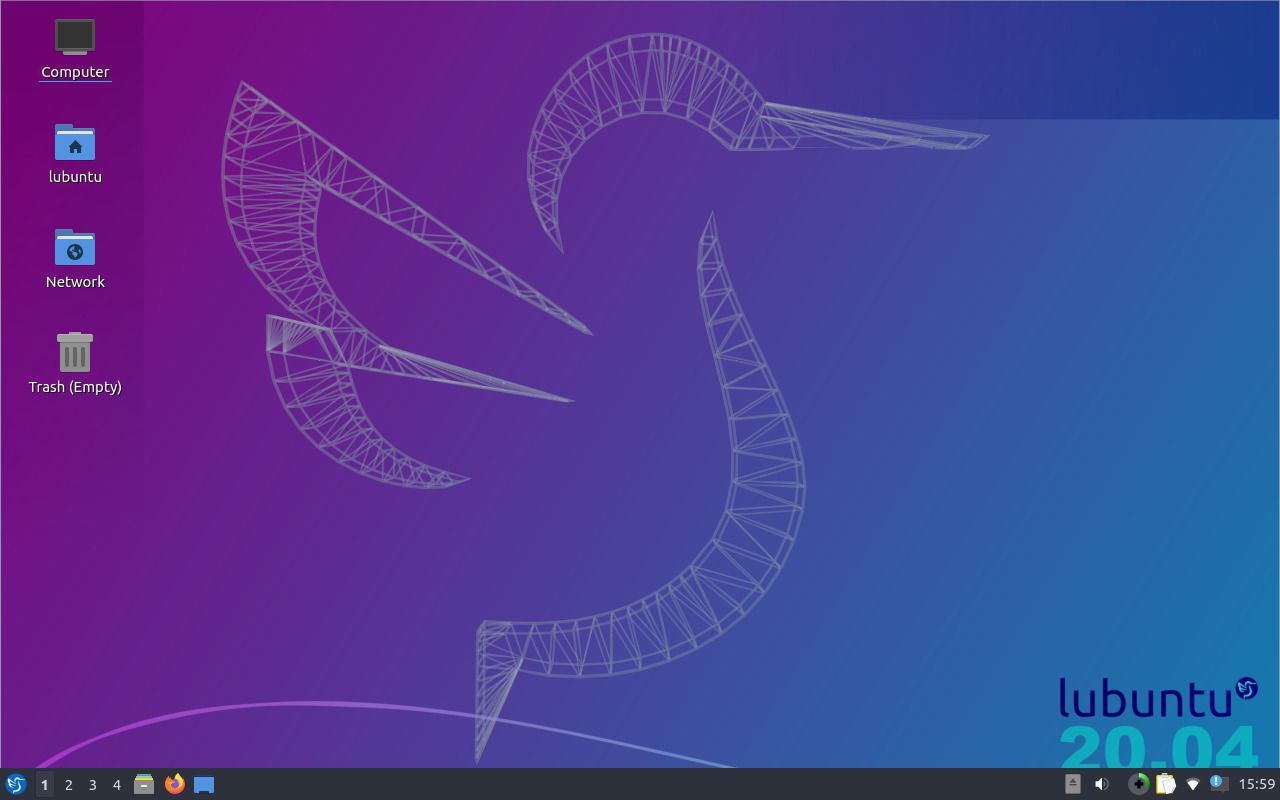

Lubuntu is a lightweight derivative of Ubuntu, running the LXQt desktop environment, making it ideal for all sorts of hardware, old or new.
Lubuntu System Requirements:
| RAM | Disk Space | CPU |
| 512 MB. | 8 GB.
Personal recommendation is at least 25 GB if you want to run various different applications on it. |
1GHz processor. |
Lubuntu Review
If you’re an Ubuntu user, this might be the best fit for you.
| Pros | Cons |
|
Other than hardware compatibility issues that you may face with lower-end devices, I didn’t experience any unusual issues or drawbacks when using Lubuntu. |
Tiny Core Linux
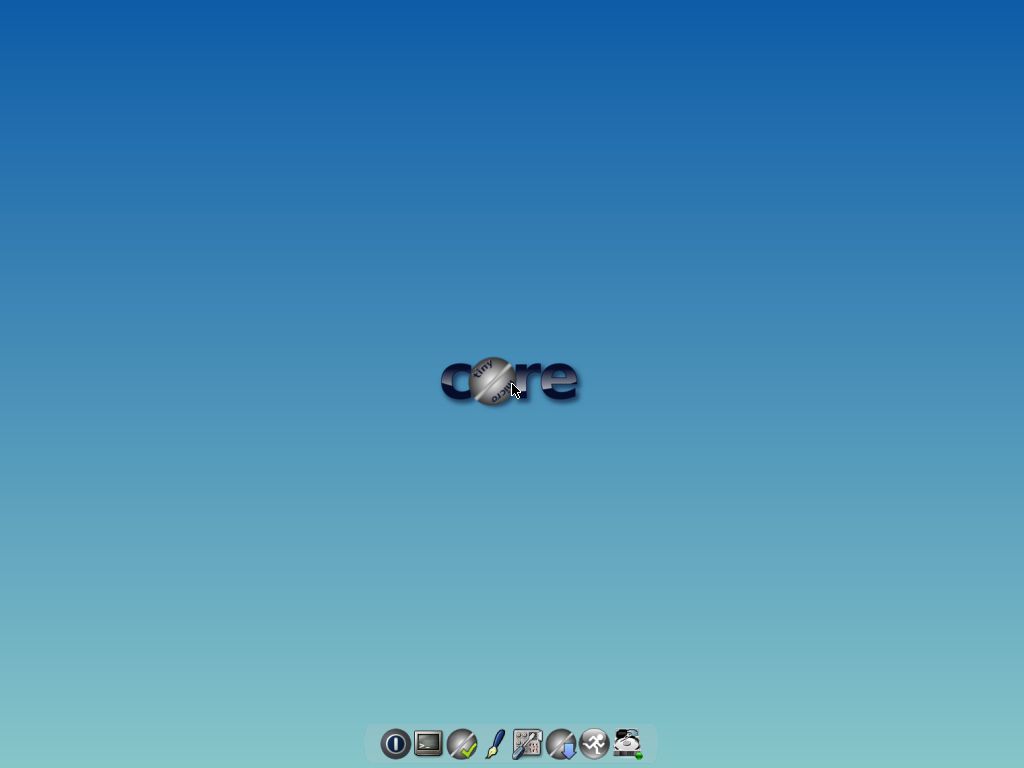

Tiny Core Linux is yet another great lightweight Linux distribution for old laptops. It was created by Robert Shingledecker, who was the former lead developer for Damn Small Linux. It is seen as the alternative option to DSL, given that Damn Small Linux is no longer in development. (Note that while the DSL is a project no more, you can still download the ISO file and use it quite functionally).
| RAM | Disk Space | CPU |
| 46 MB. | Can run entirely on RAM.
Personal recommendation is at least 25 GB if you want to run various different applications on it. |
i486DX |
Tiny Core Linux Review
Although I have never specifically used Tiny Core, I don’t imagine that it would be very different from all the lightweight variants above.
| Pros | Cons |
|
|
Q4OS
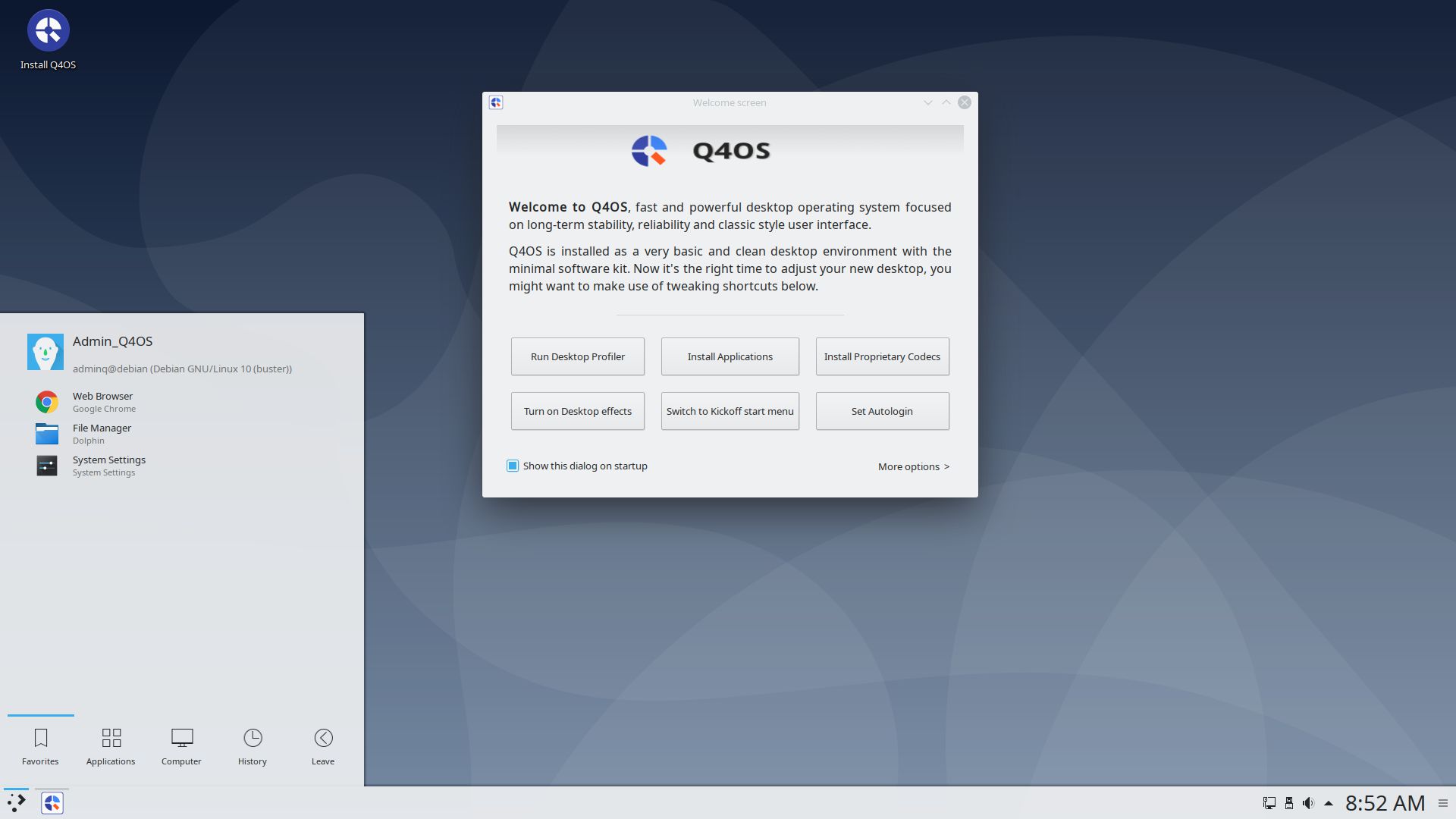

Q4OS is a beginner-friendly, user-friendly, no-frills operating system based on Debian. It supports both 64-bit and 32-bit processors.
Q4OS System Requirements:
| RAM | Disk Space | CPU |
| 128 MB (if you use the Trinity Desktop Environment).
1 GB (if you use the Plasma Desktop Environment). |
3 GB.
5 GB. Personally, I recommend at least 25 GB. |
300MHz or better. |
antiX Linux
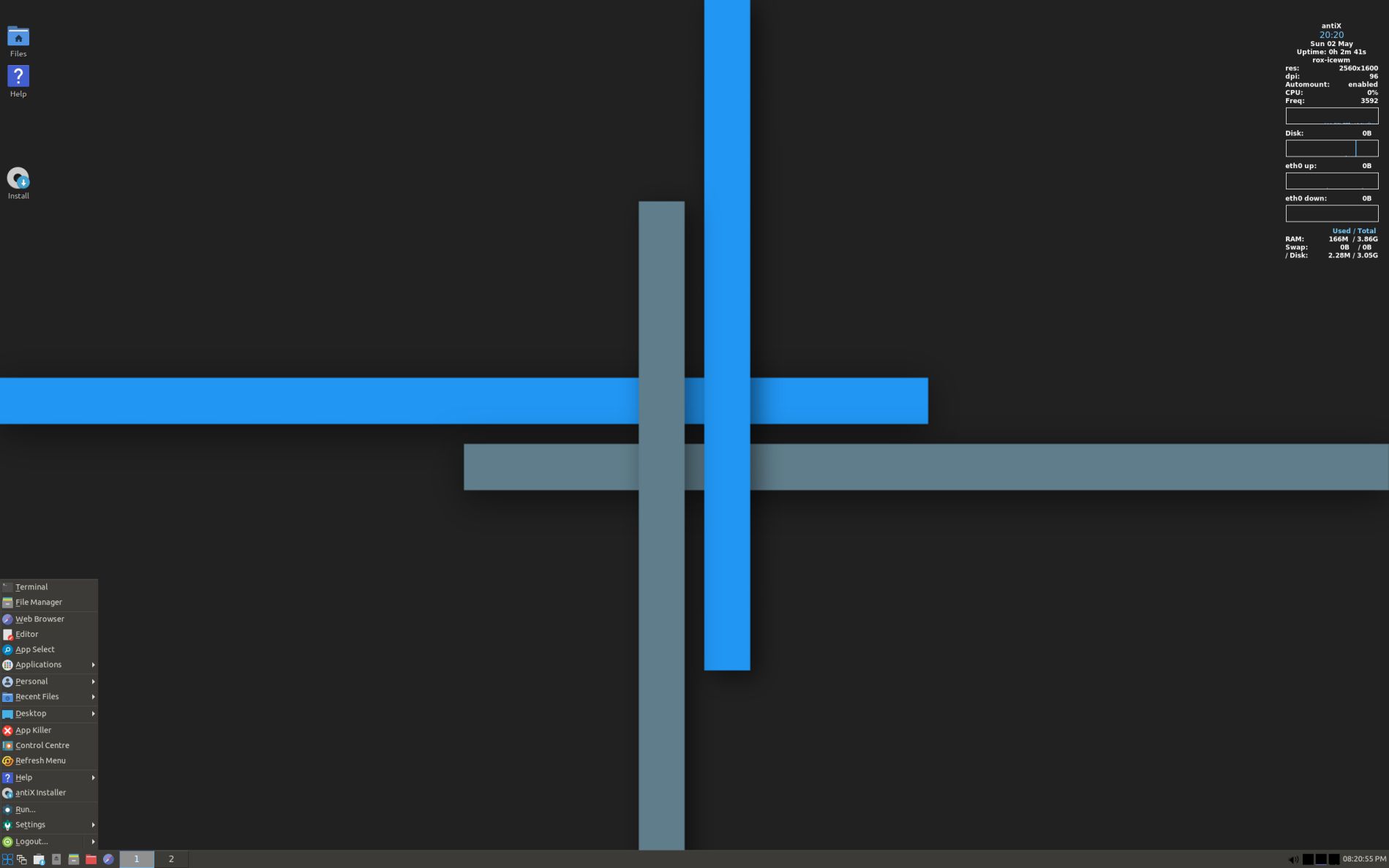

antiX is a Debian-based Linux distribution that rocks the IceWM Window Manager in conjunction with the ROX Desktop Environment. Its slogan, “Proudly anti-fascist “antiX Magic” in an environment suitable for old and new computers” speaks volumes. It not only supports old hardware but was built with it in mind.
| RAM | Disk Space | CPU |
| 256 MB. | 3-5 GB.
25 GB is ideal if you will be using and installing additional applications. |
i386 |
NetRunner
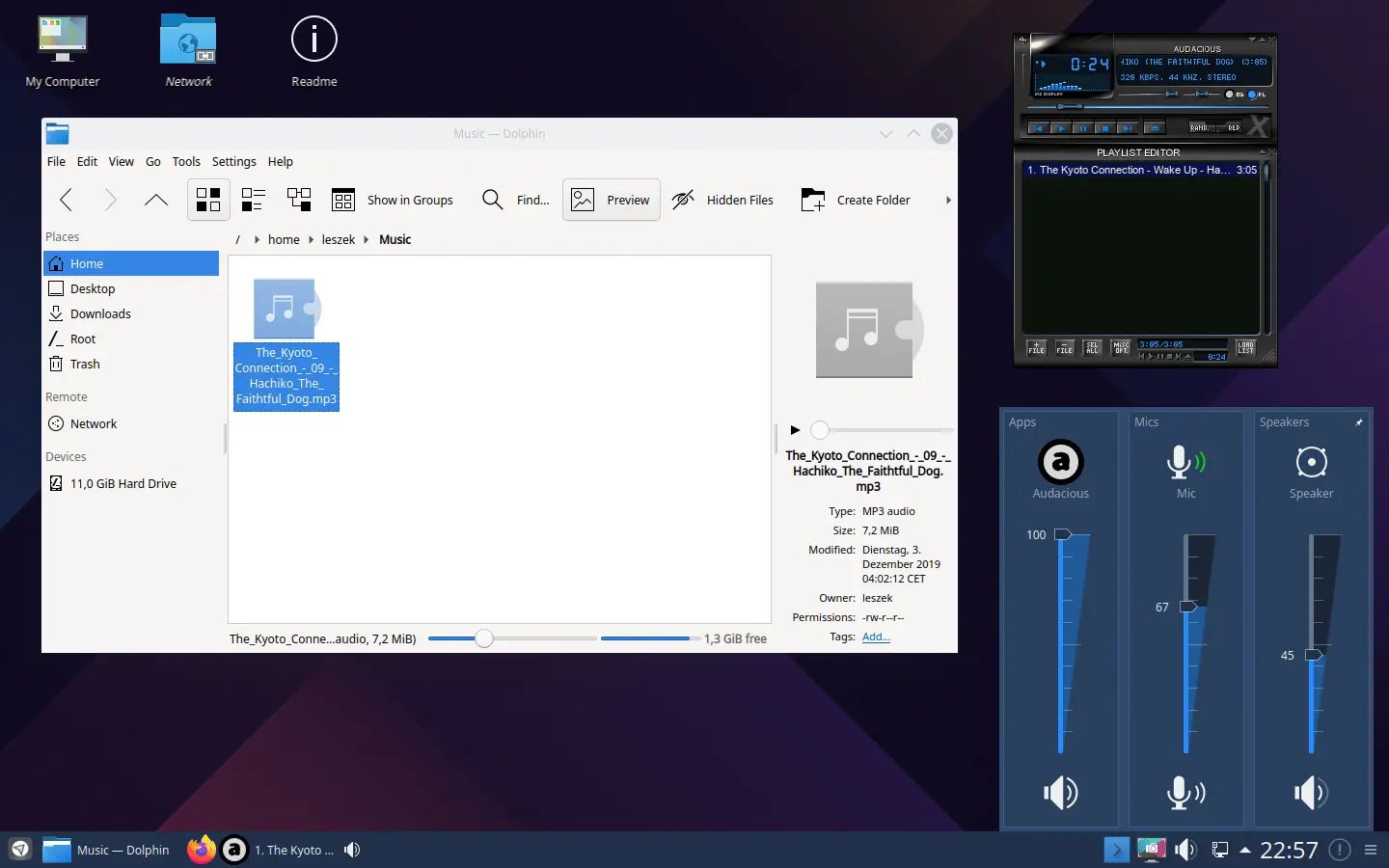

NetRunner is a unique Debian-based Linux distribution that has two versions:
- ARM: only requiring about 400 MB of RAM, this edition of NetRunner is great for lower-end machines.
- Core: the regular edition geared towards mid-to-high-end devices.
NetRunner was created by Blue Systems and rocks the KDE Plasma Desktop Environment.
NetRunner System Requirements:
| RAM | Disk Space | CPU |
| Uses 400-500 MB, R.A. Memory, but 1 GB is the minimum requirement for NetRunner ARM.
4 GB+ is ideal for the regular version. |
15 GB | 1.6-GHz Intel Atom |
NetRunner Review
This was actually one of my favorite Linux distros. I used it on my Acer Aspire E15. What I enjoyed about it most were its beauty and stability. Similar to how Apple users view Mac, it just works. NetRunner is one of those distros where it doesn’t come with too much or too little, but whatever it does come with, it integrates really well with your machine so you won’t encounter too many bugs (I encountered none) in comparison to some of your alternatives. While it’s not very different in the context of visual appeal, its core functionality is strengthened.
Bodhi Linux
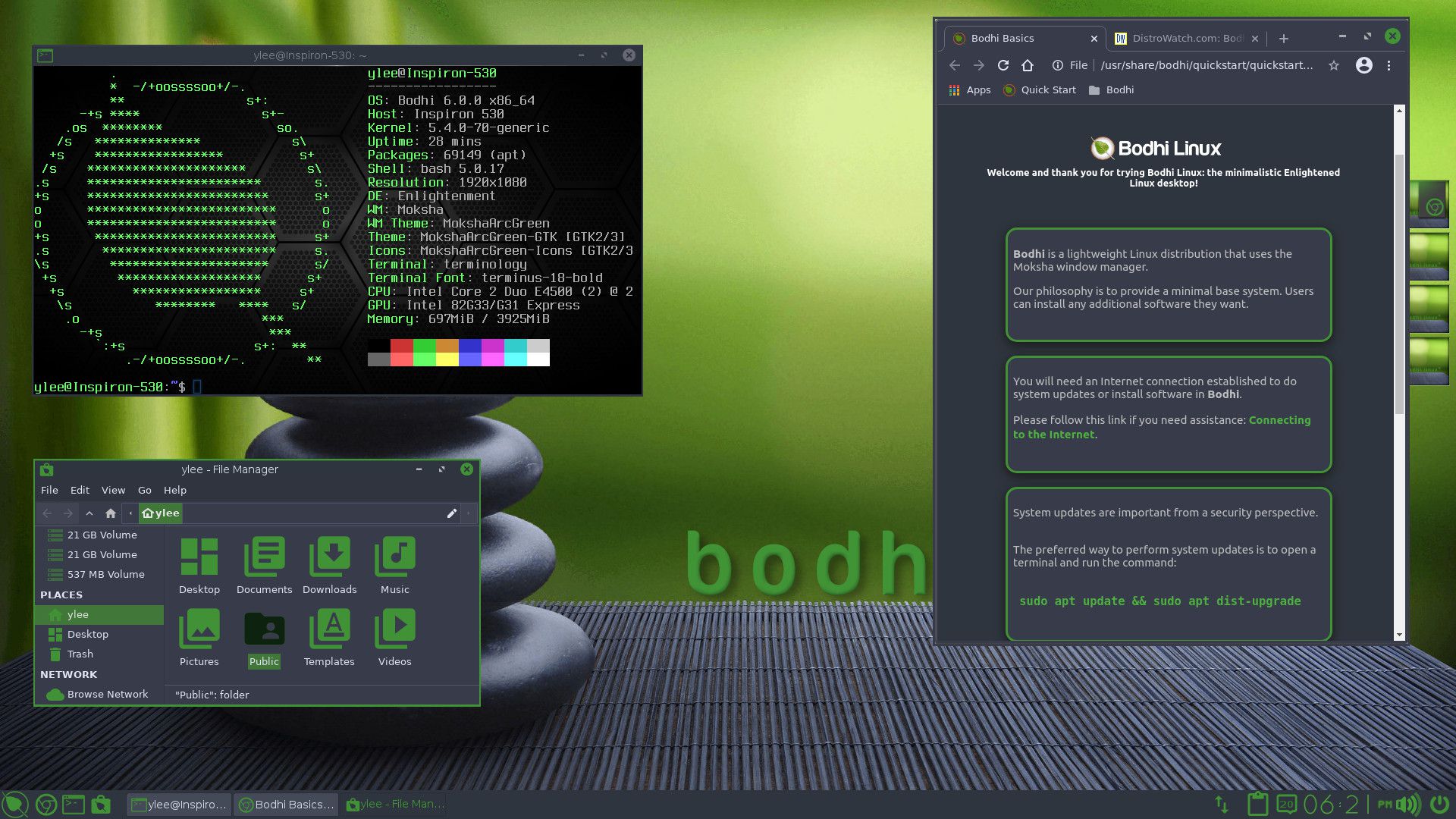

Bodhi Linux is an open-source lightweight Linux distribution based on Ubuntu (20.04). It is unique in that it is built by contributors rather than a set team of developers.
Bodhi Linux uniquely rocks the Moksha desktop environment.
Bodhi Linux System Requirements:
| RAM | Disk Space | CPU |
| 512 MB. | 5 GB. | 500MHz. |
Bodhi Linux Review
Similar to NetRunner, my experience with this distro, although short-lived, was ‘it just works.’ It’s also quite aesthetically pleasing (to me). I love the whole “hacker theme” it has going on, what with the terminal color scheme (black, green, a bit of white).
Linux Lite
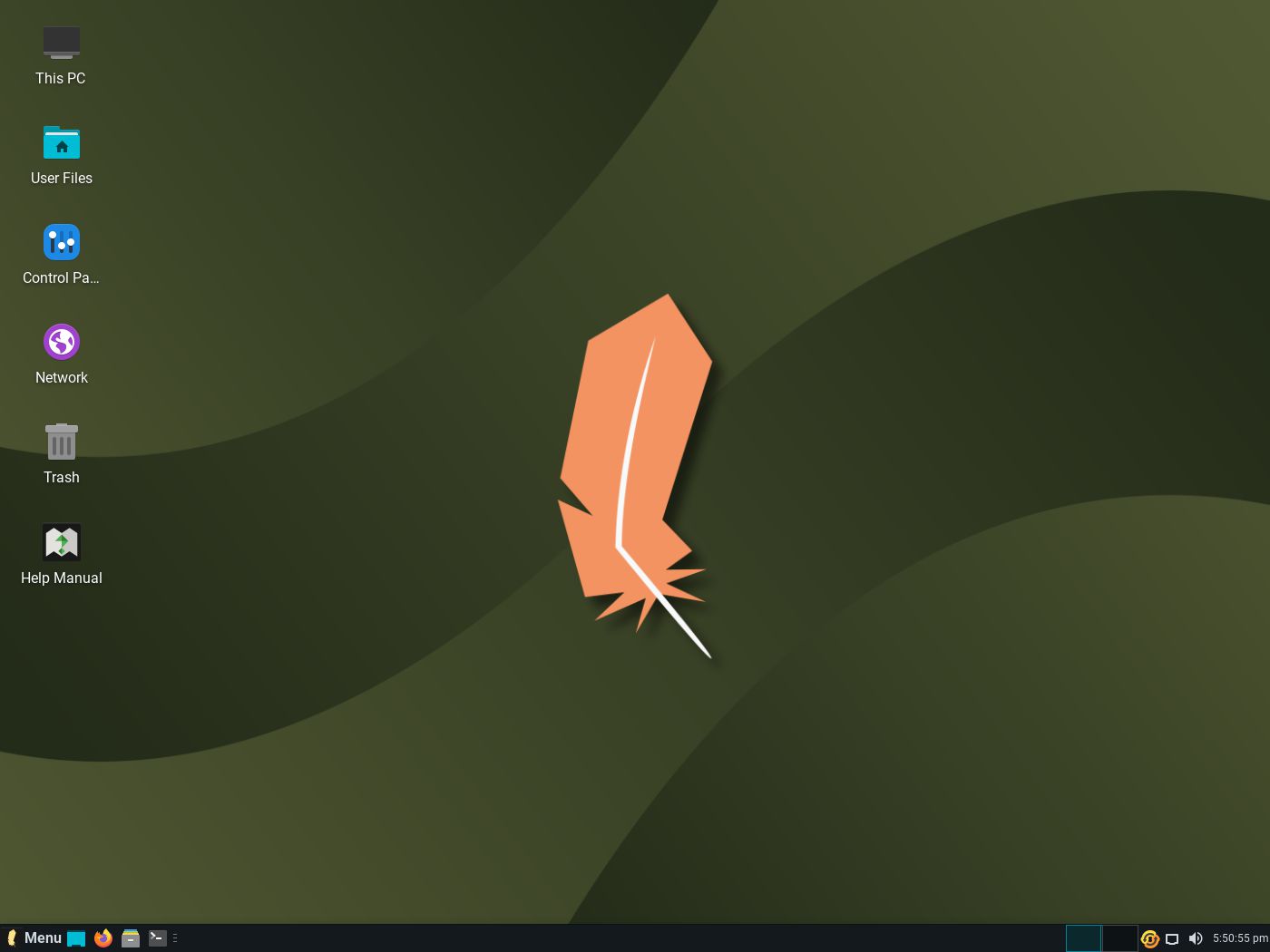

Linux Lite is an Ubuntu LTS-based distro that rocks the XFCE desktop, which is good news with regards to having a snappy experience, especially on lower-end hardware.
Both 64-bit and 32-bit are supported.
Linux Lite System Requirements
| RAM | Disk Space | CPU |
| 512 MB (possible, but might be unstable).
768+ is recommended. I would personally recommend no less than 2 GB if you want to be productive without facing performance issues. |
8 GB. | 700MHz. |
Peppermint Linux


Not only does Peppermint Linux offer you a lifetime supply of Peppermint candies, but it also gives your old hardware a fresh start. It was Mint to be. Okay, maybe I’m not as funny as I think I am.
In all seriousness, Peppermint Linux, was, for me, yet another one of those “it just works” experiences. Peppermint is a Debian Bullseye-based OS that rocks the XFCE Desktop Environment.
Peppermint System Requirements:
| RAM | Disk Space | CPU |
| 512 MB.
1 GB recommended. I personally recommend at least 2 GB if you want to be productive without facing potential performance issues. |
4 GB.
15 GB recommended. I personally recommend no less than 25 GB if you will be using additional apps. |
Intel x86 architecture. |
50+ more lightweight Linux distros for old laptops
As you can see, there are quite a lot of options out there for old laptops, even if you only check the 10 distros in this list. But, as apparent from this huge list, there are more than 50 lightweight Linux distros that you can use on your old laptop.
Now, Let’s Discuss Linux Software for Old Laptops
The most common usage for old hardware is something more lightweight, like writing, taking notes.
If you’re going to be using a lightweight distribution, you’ll want to have some ideas for lightweight note-taking applications as well. While the minimum requirement for many of these distros is 512 MB RAM, you’ll want at least 1 GB if you are going to be even somewhat productive.
Joplin (Free, Paid)
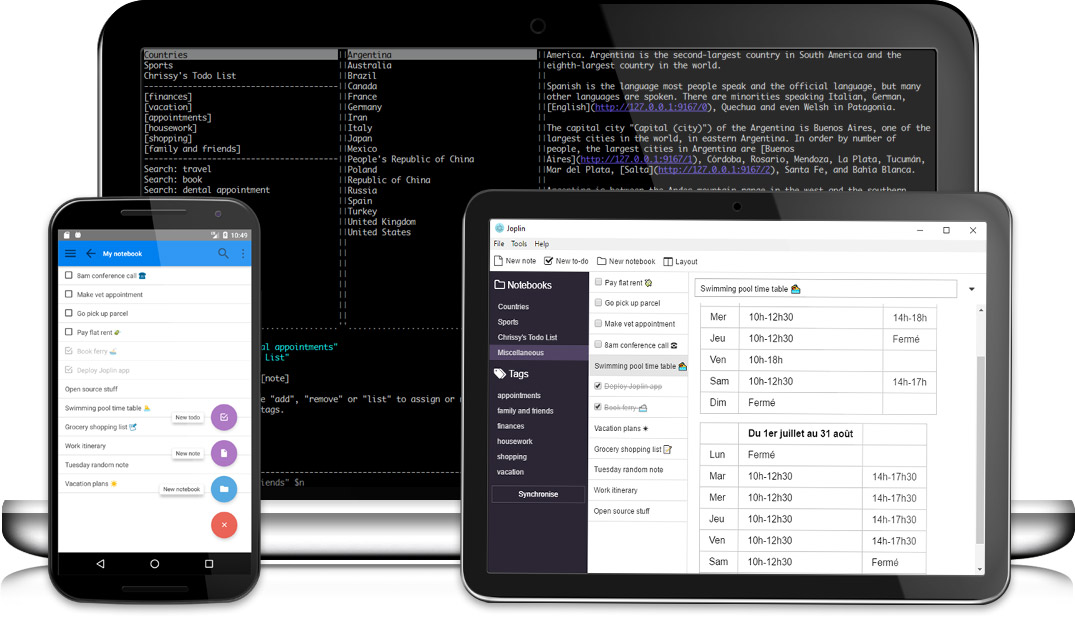

Joplin is a great lightweight note-taking application that supports offline mode or cloud synchronization.
You can organize your notes by tags and notebooks.
You can attach files like images, videos, PDFs, and audio files.
QOwnNotes (Free)
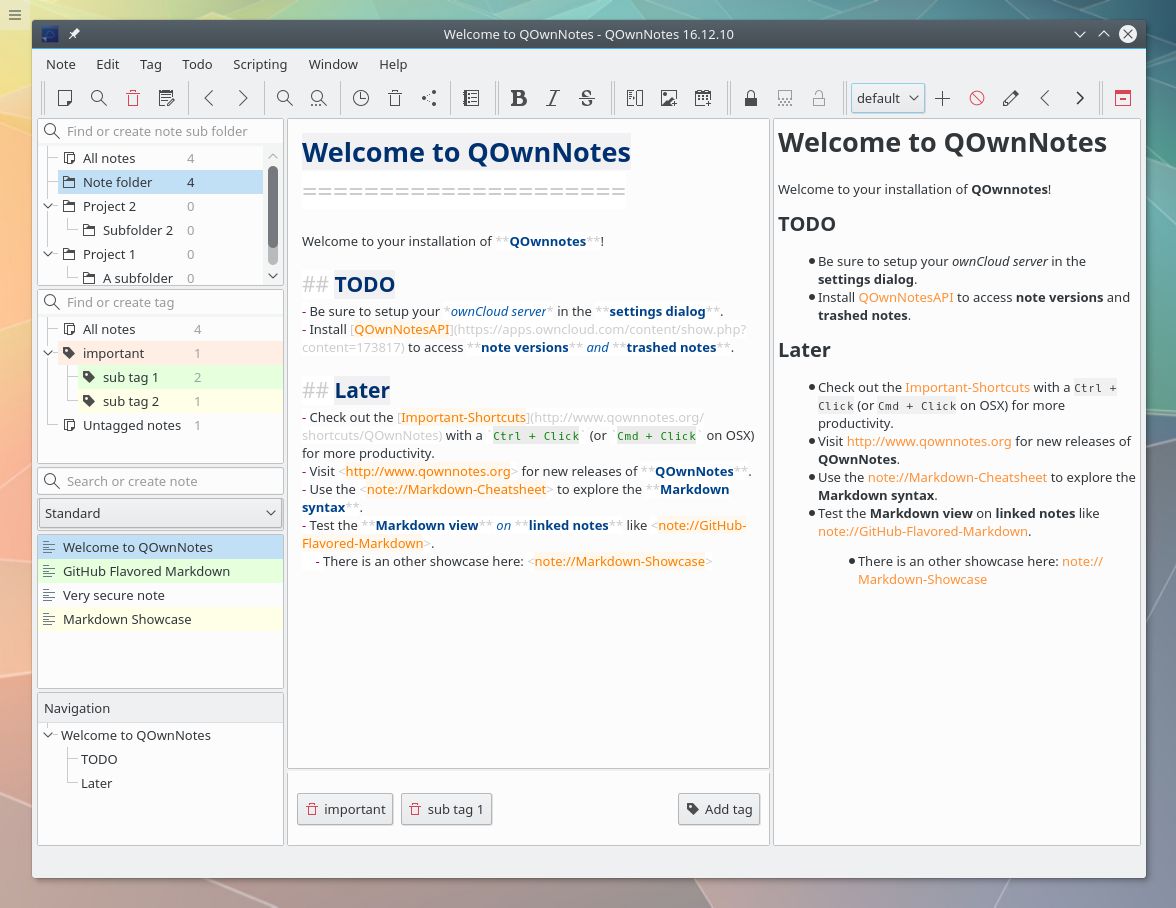

QOwnNotes is a highly-function, lightweight, note-taking application that supports plain-text and Markdown. You can synchronize it using Nextcloud, and of course, store files locally.
You can organize your notes using Folders and Tags.
You can attach images.
Evernote (Free, Paid)
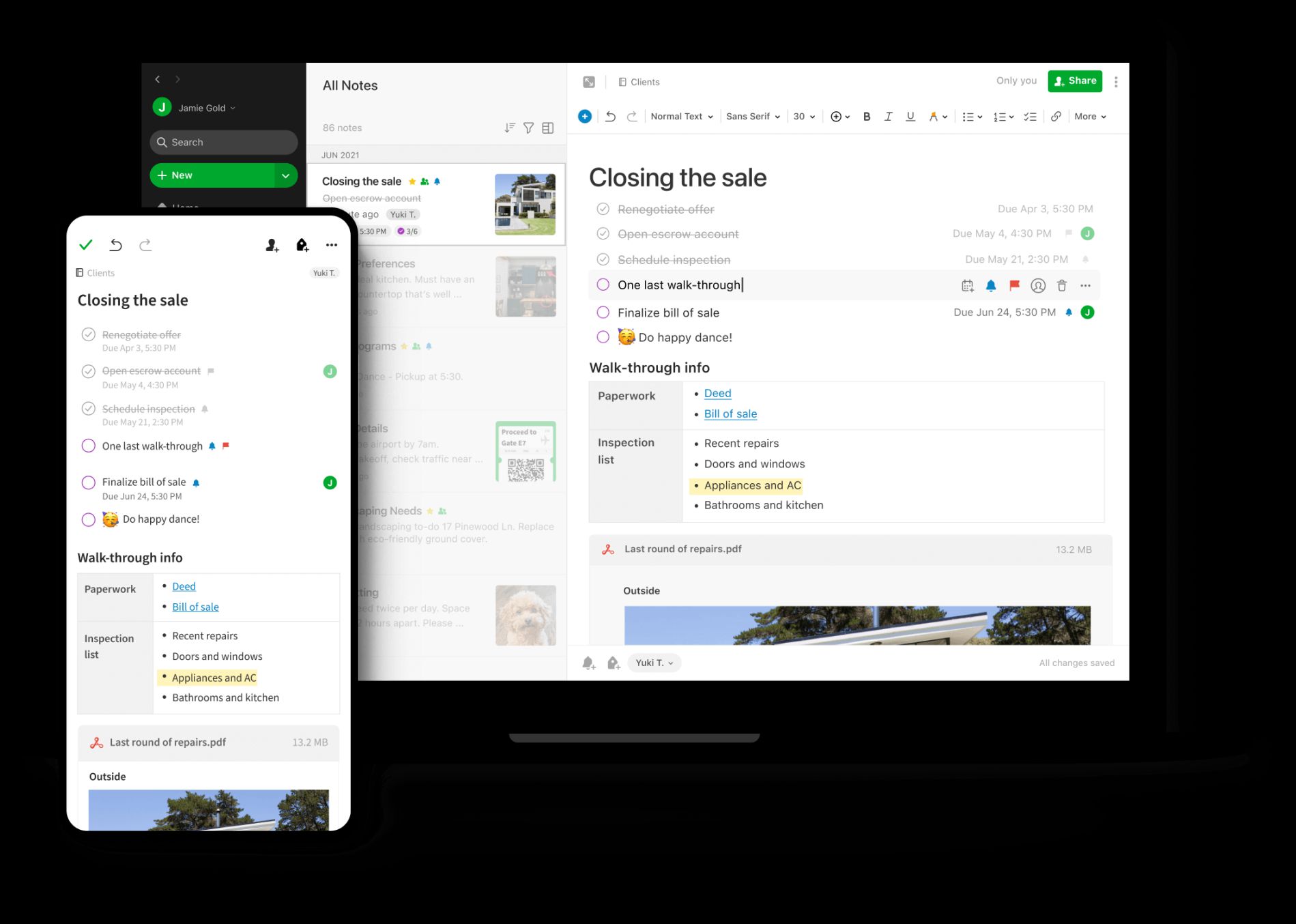

Evernote is a powerful note-taking and task-management application. While its Linux version is in private beta, the web version (especially its new V10) is available to use.
You can organize your notes using Notebooks, Tags, and Stacks.
You can attach images, videos, audio notes, PDFs, PowerPoints, and more. You can also embed other contents into a note.
Its search is extremely powerful.
While V10 is lightweight, it is still heavier than its previous Web iteration, which you can roll back to, should you face any issues.
Evernote’s introductory video is a must-watch for anyone desiring to know more about how to be more productive with it.
Obsidian (Free, Paid)
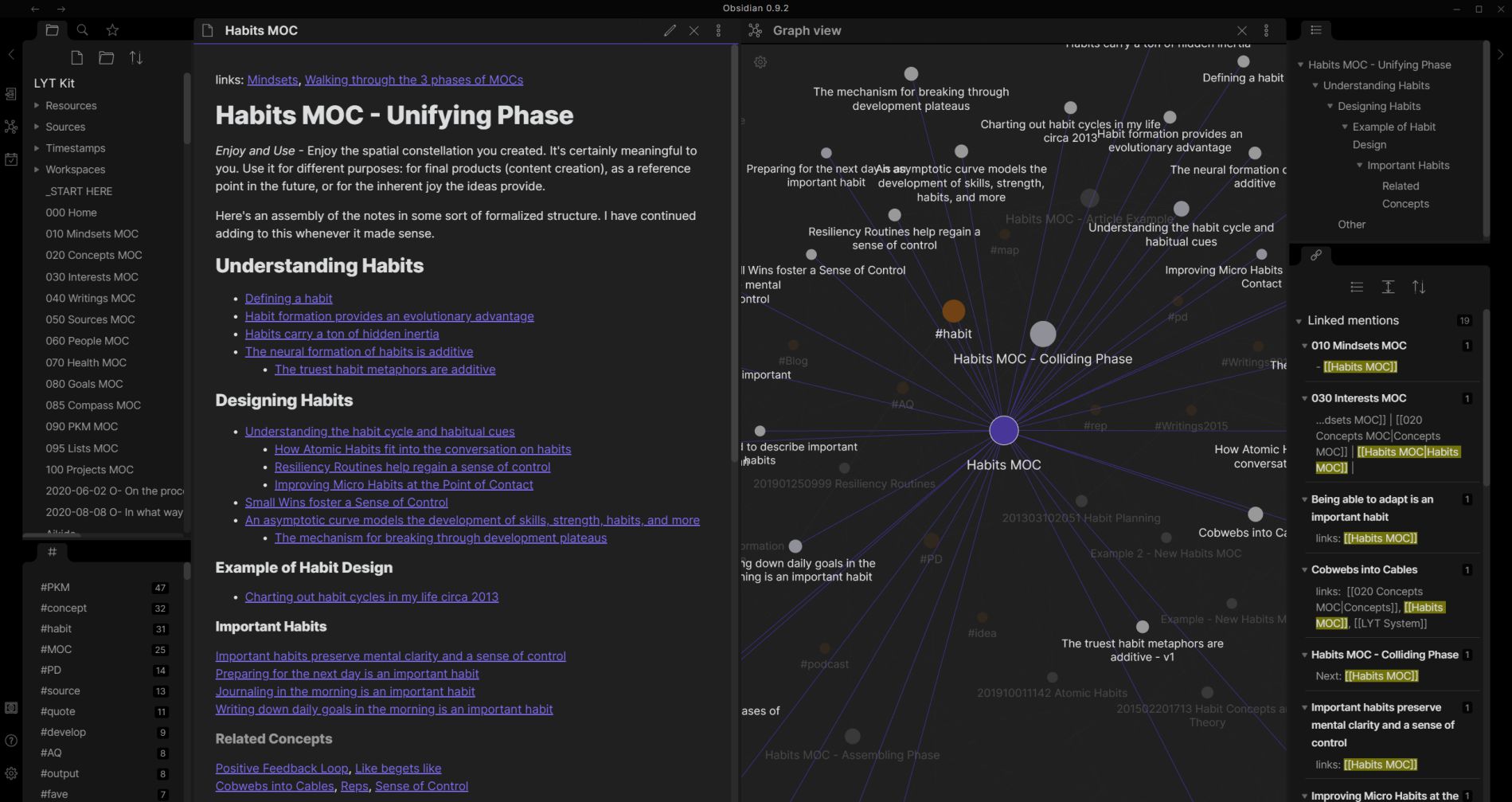

Obsidian is a powerful and lightweight Markdown editor. You can use it offline or pay for cloud synchronization.
Like Evernote, Obsidian prides itself on its ability to become your second brain. Obsidian’s fascination with memory stems from its desire to help you never forget information; the more you use it, the more powerful and useful it becomes.
You can attach images, videos, and PDFs.
You can organize your notes using Tags and Folders.
Its search is extremely powerful.
For a more detailed list of note-taking applications, please read this article.
Bonus Tip for Old Laptops: a Lightweight Browser for Linux
If you’re going to use your old laptop for browsing, you might as well use a lightweight Linux browser like Midori. You can learn more about Midori in this article.
What Linux distro and software are you using on your old laptop/computer? Leave a comment below.

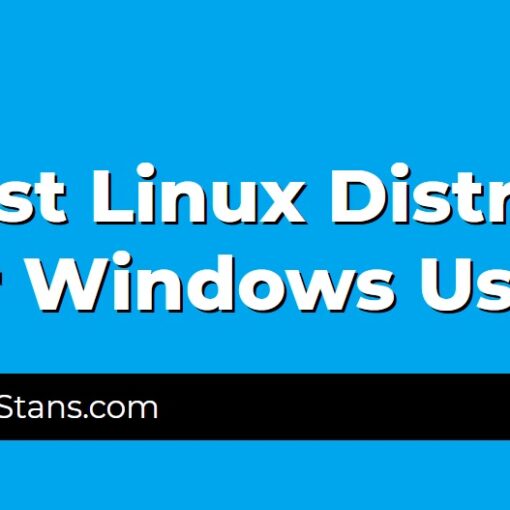
13 thoughts on “The Best Linux Distros For Old Laptops”
Interesting article. One aspect is not discussed however, that is the size of the ISO. My old laptop only accepts installing using the built-in CDplayer (max. around 700 MB), but cannot start from a USB stick.
I discovered that AntiX 19 has a 32 ISO that just fits on a CD, but their latest version 21 based on Debian bullseye no longer.
Try Tiny Core Linux. It can be found through distrowatch or it’s own website.
The Core Project, as suggested by our name, is not a turnkey desktop distribution. Instead we deliver just the core Linux from which it is quite easy to add what you want. We offer 3 different x86 “cores” to get you started: Core, TinyCore, and our installation image, CorePlus.
Core
(16 MB) Core is the base system which provides only a command line interface and is therefore recommended for experienced users only. Command line tools are provided so that extensions can be added to create a system with a graphical desktop environment. Ideal for servers, appliances, and custom desktops.
TinyCore
(21 MB) TinyCore is the recommended option for new users who have a wired network connection. It includes the base Core system plus X/GUI extensions for a dynamic FLTK/FLWM graphical desktop environment.
CorePlus
(163 MB) CorePlus is an installation image and not the distribution. It is recommended for new users who only have access to a wireless network or who use a non-US keyboard layout. It includes the base Core System and installation tools to provide for the setup with the following options: Choice of 7 Window Managers, Wireless support via many firmware files and ndiswrapper, non-US keyboard support, and a remastering tool.
You missed crunchbang derivative ‘bunsenlabs’
Great article. However – these “ISO”S are targeting laptops that are flat OLD – and should be recycled. There comes a time and date – when you just have to let go of your old wallet, old shoes with the holes in the sole, and your Windows 95 laptop.
Well, there are times when an old LT is desirable. I’m a mechanic and do field work, ie, not at my shop. I take my old AcerAspire (2005) with downloaded manuals on it and don’t have to worry about screwing up my newer $1600 LT. I did install an IDE SSD which helped a lot. My biggest hurdle was the SIS video card. So, there are times when an old somewhat expendable LT IS desirable. Would you wear designer Italian sandals to work in your garden…or a pair of old flip-flops? Using Lubuntu, going to try Mate.
I have a monster gaming laptop in my office, not because I’m a gamer, but because it is the only LT that comes even close to keeping up with my work speed. I then have a very sturdy, trusty old Dell Inspiron that is super light and durable and classy looking enough to take in the field to coffeeshop business meetings or to work remotely and enjoy not hoisting a boulder in my backpack. So, there are times when an old laptop services just fine. We are not all doing super high computing programming projects. I simply use Inkscape, Libre Write, Libre Calc, Atom editor, Filezilla, and a browser. That’s it. The only one of those that can get troublesome with the smaller 6G RAM on my Dell is the Inkscape on large files or files with multiple graphics projects embedded. I remain aware of that and appropriately keep my graphics projects broken into individual projects. I find programmers have a hard time putting themselves in other’s shoes and often make your kind of social mistakes. Don’t know if you’re a programmer, but you’ve made the faux pas of one.
Dear Sylvio! Thanks for your article about Linux. It’s very useful and detailed. I’m Linux fun, my hobby is old PC and Laptop refurbishing. Sometimes drivers causes some trauble. B.R.Arpad
Agreed on the drivers…especially SIS video drivers.
My Lenovo Thinkpad T400 (at least 12 years old) with 8 Gb ram, Intel Core 2 Duo processor (2,53Ghz) runs SolydK linux just fine. I have newer laptops, so now it is mainly used for gaming (when I go to a Friend’s home) logging ham radio contacts, and updating the Firmware on my Xiegu G90 SDR Ham Radios.
just here to shout “TYVM yo, GBU”
As someone that has a Dell netbook from 2009, that doesn’t work well with Windows 7 after 11(?) years of updates, and really just wants to use it as a second screen for watching Youtube or taking notes, this was really useful to me. Currently planning on giving Puppy Linux and Lubuntu shots.
I’ve been trying to revive my old Acer Aspire laptop for years, and I finally found the perfect distro – Linux Lite! Thanks for the recommendations, I was considering Lubuntu but Linux Lite has been a game-changer for my old hardware. The lightweight interface and tiny boot size have really breathed new life into my trusty old laptop
Hi,
I have a Toshiba Satellite Pro L300 with 2.8GB RAM 500GB HD on which I successfully used Parrot OS 64 bit for years but switched to Q4OS 64 bit about 2 years ago; other Linux OS also used successfully over the years: Lite, Manjaro, Mandriva, Puppy, Tails, Fuduntu, DSL & others I have forgotten.